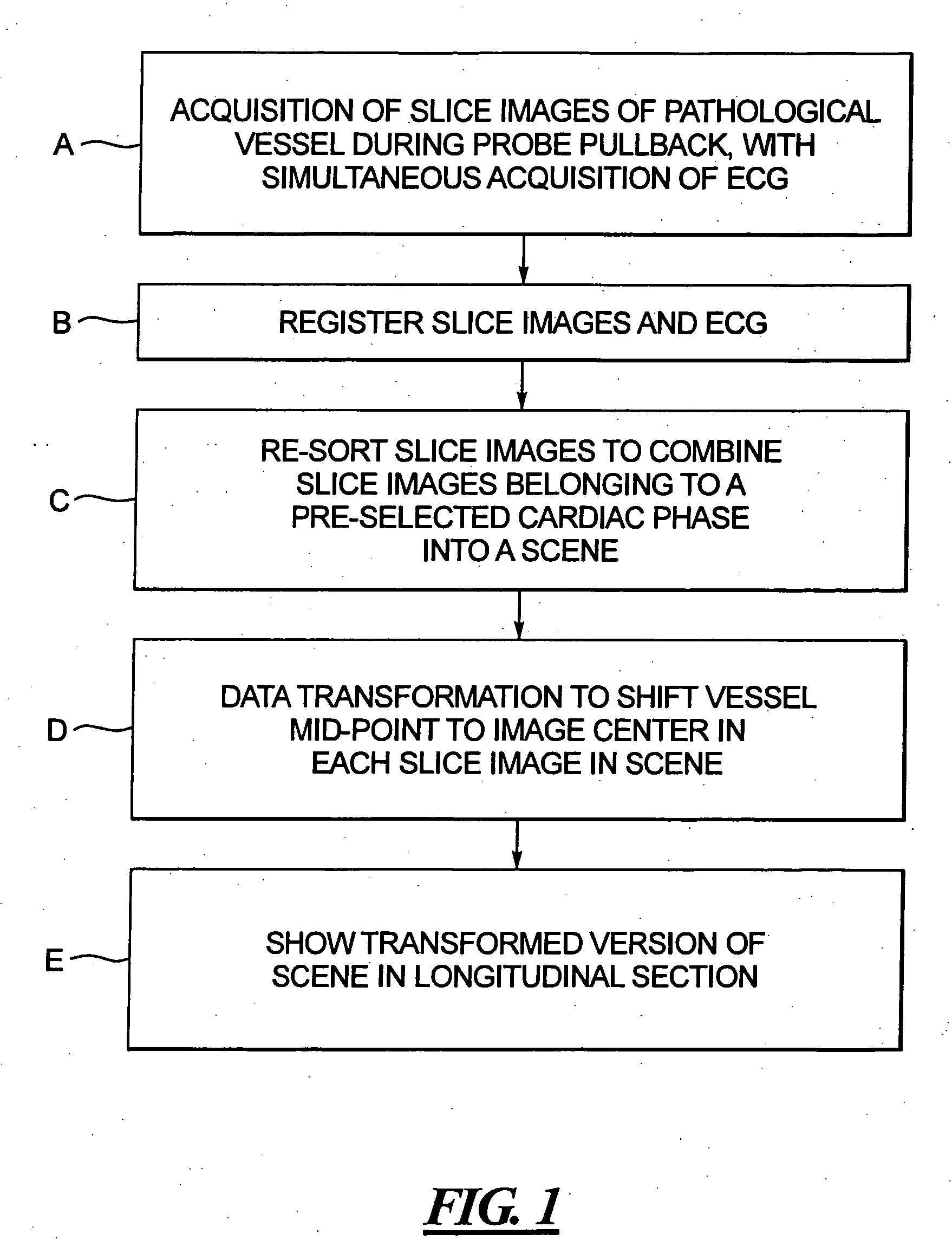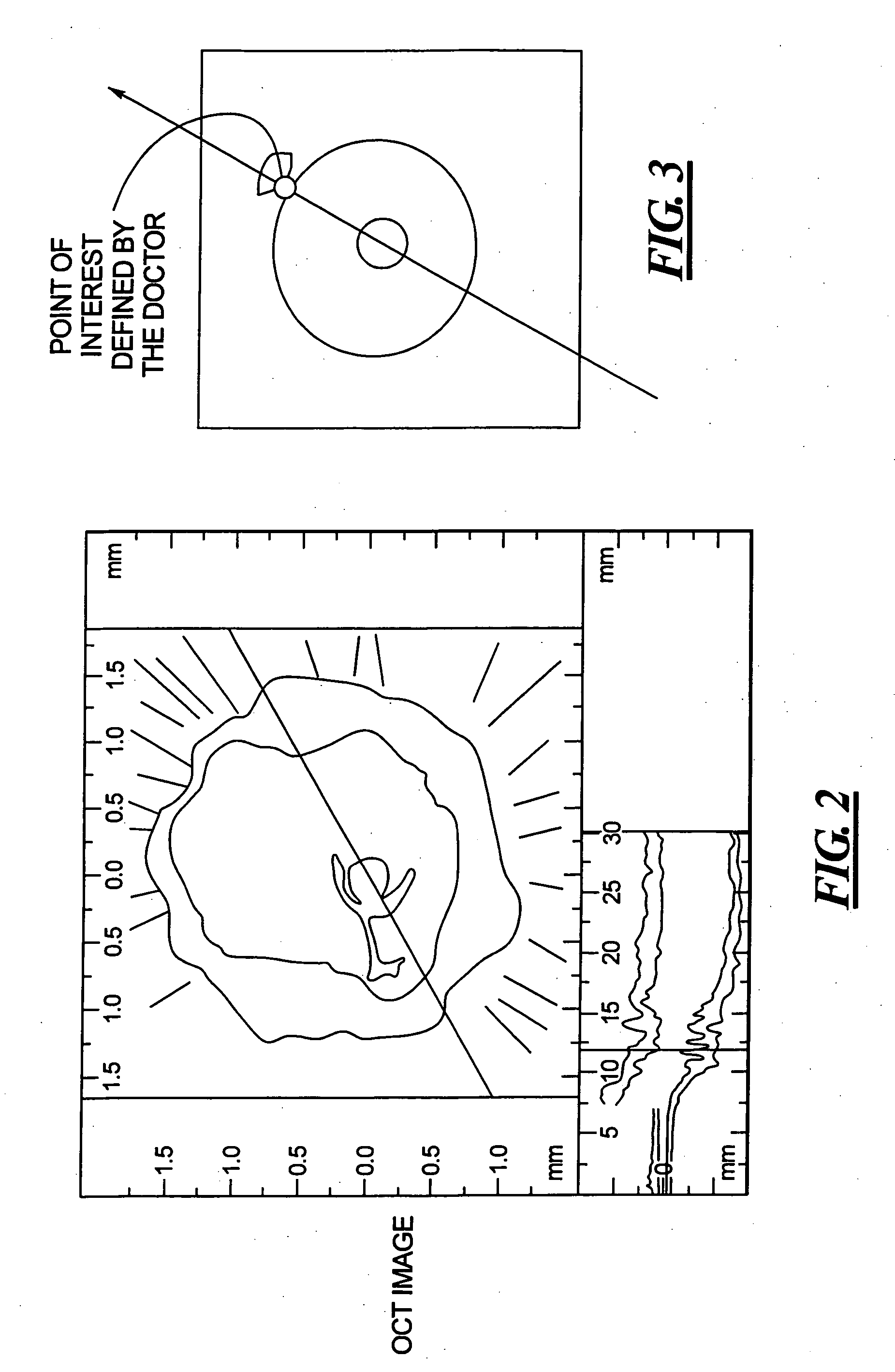Method and apparatus for ECG-synchronized optically-based image acquisition and transformation
a technology optical coherence tomography, which is applied in the field of optical coherence tomography (optical coherence tomography) methods and apparatuses, can solve the problems of coronary artery narrowing, stenoses, lipid-filled plaque deposits, and inability to provide information regarding the morphology (appearance and extent) of the lesion
- Summary
- Abstract
- Description
- Claims
- Application Information
AI Technical Summary
Benefits of technology
Problems solved by technology
Method used
Image
Examples
Embodiment Construction
[0026] The basic steps of an optically-based slice imaging method, for acquisition of the slice images as well as combining the slice images into a diagnostic image, according to the invention are shown in FIG. 1.
[0027] In step A, a series of slice images of a pathology-containing vessel are acquired during pullback of an optical probe, such as an OCT probe or an OFDI probe. The optical probe can be positioned in the vessel at a location downstream from the suspected location of a lesion (pathology) so that during pullback a succession (series) of slice images are acquired not only from the lesion-containing portion of the vessel, but also from portions downstream and upstream therefrom. As also indicated in step A, an ECG signal is acquired from the subject during pullback of the optical probe. Preferably a centering catheter is used sot that the slice images will all be oriented perpendicularly to the center axis of the vessel. Alternatively, known external position and orientati...
PUM
 Login to View More
Login to View More Abstract
Description
Claims
Application Information
 Login to View More
Login to View More - R&D
- Intellectual Property
- Life Sciences
- Materials
- Tech Scout
- Unparalleled Data Quality
- Higher Quality Content
- 60% Fewer Hallucinations
Browse by: Latest US Patents, China's latest patents, Technical Efficacy Thesaurus, Application Domain, Technology Topic, Popular Technical Reports.
© 2025 PatSnap. All rights reserved.Legal|Privacy policy|Modern Slavery Act Transparency Statement|Sitemap|About US| Contact US: help@patsnap.com



